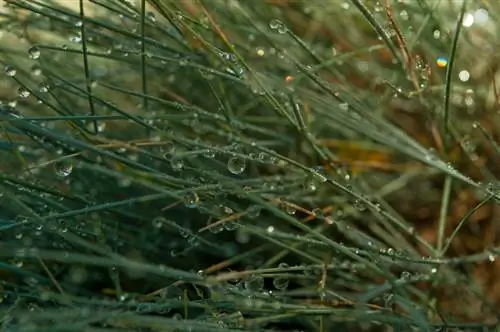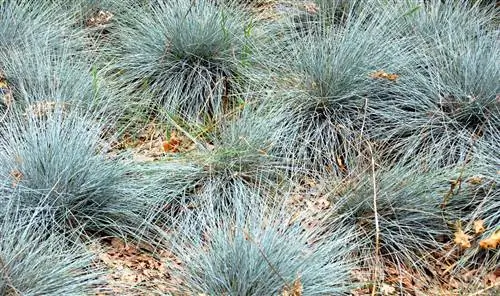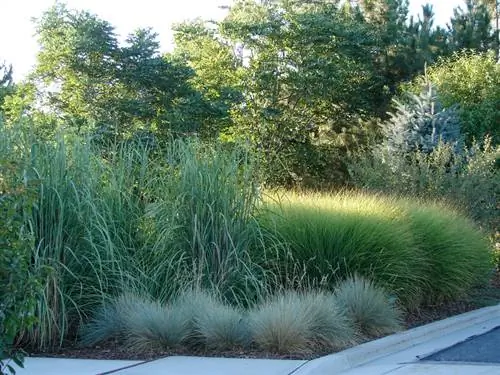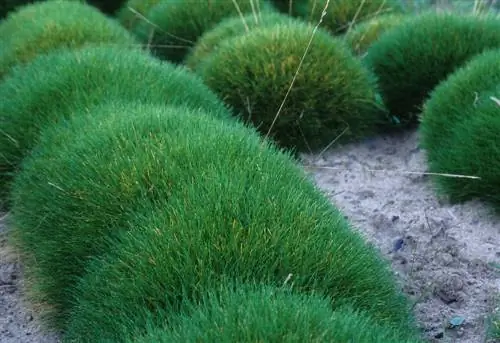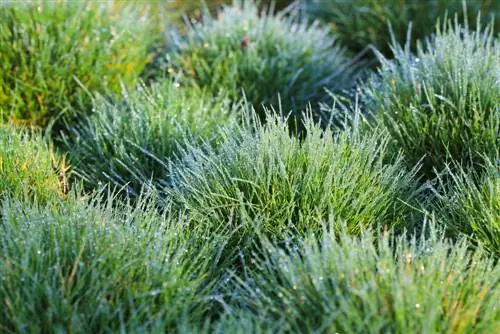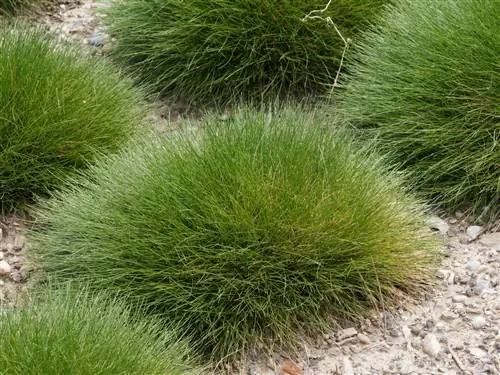- Author admin [email protected].
- Public 2023-12-16 16:46.
- Last modified 2025-01-23 11:20.
The very species-rich genus of fescue (Festuca) belongs to the meadow grasses and is widespread throughout the world. The blue fescue (Festuca glauca), also known as 'bearskin grass' due to its characteristic look, can be used in a variety of ways in German gardens. The plant is also considered very easy to care for.
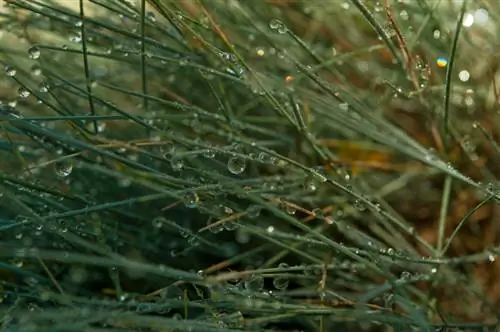
How do you properly care for blue fescue?
Blue fescue care includes planting in poor, sandy soil, avoiding watering (except in very hot months), no additional fertilizing, and removing spent flower stems. The grass is hardy and pest-resistant.
What use is blue fescue suitable for?
Blue fescue can be used to border beds, but also as ground cover (e.g. in the form of a lawn replacement on smaller areas). The stalks grow up to 30 centimeters high and form dense cushions.
Where should blue fescue be planted?
The bearskin grass loves a bright and dry location, which should be in partial shade if possible.
In which substrate does blue fescue feel particularly comfortable?
Plant the blue fescue in dry, poor and sandy to gravelly soil. The eponymous coloring of the plant is more intense the barren the soil is. Heavy substrates containing clay and peat, on the other hand, are unsuitable.
Do you need to water blue fescue?
Watering should be avoided - except in very hot, dry summer months in exposed locations - as blue fescue is very sensitive to moisture.
When and with what should you fertilize blue fescue?
Since blue fescue feels most comfortable in poor soil and only develops its beautiful color there, regular fertilization is also unnecessary. It is sufficient to work a little compost into the soil every two to three years.
Is it advisable to prune blue fescue?
Cutting or even mowing the blue fescue is not necessary. Only the dead flower stalks should be removed to prevent the fast-growing grass from spreading unhindered.
Which diseases/pests are particularly common in blue fescue?
Blue fescue is very resistant to pests and diseases, and snails also avoid the plant.
How to propagate blue fescue?
Blue fescue can easily be propagated by sowing (the plant has a strong tendency to self-sow) and dividing larger perennials.
Is blue fescue hardy?
Planted blue fescue is absolutely hardy. Specimens only grown in pots require light winter protection so that the roots do not freeze back.
Tip
Due to the very similar location and care requirements, blue fescue can be cultivated very well together with feather grass, lavender and/or thyme (as well as other Mediterranean spice plants).

